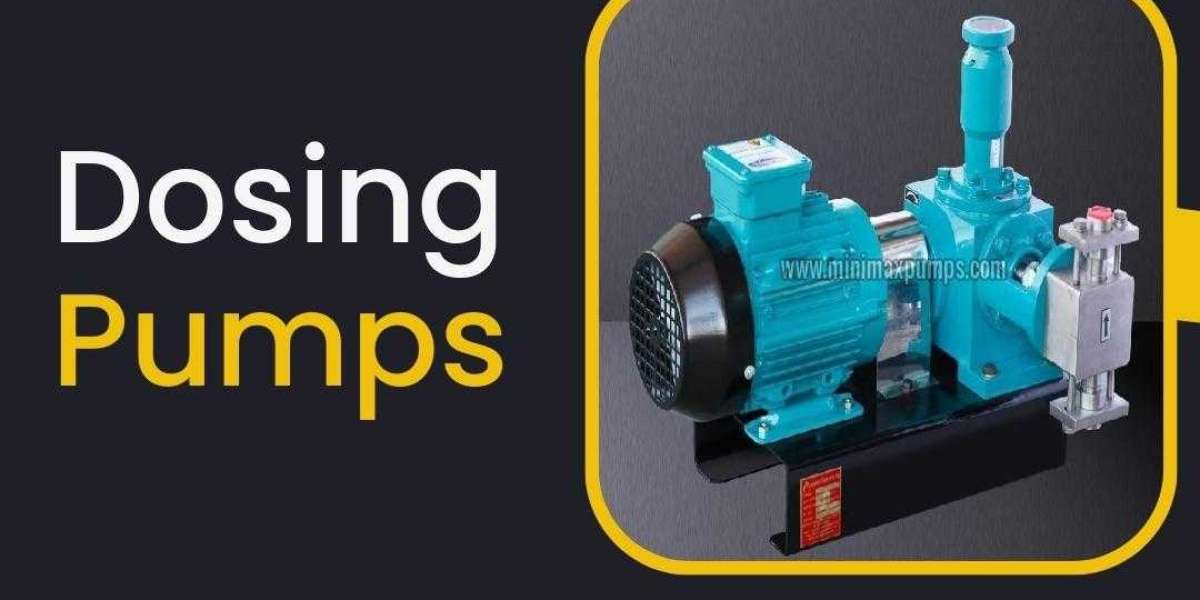Dosing pumps are a crucial part of many industrial processes that require precise and consistent dosing of liquids or chemicals. Dosing pumps are designed to deliver a specific amount of liquid or chemical over a specified period, and they are used in a wide range of applications, including water treatment, chemical processing, food and beverage production, and pharmaceutical manufacturing. In this article, we will discuss the basics of dosing pumps and their use in various industries.
What are Dosing Pumps?
Dosing pumps are positive displacement pumps that are designed to precisely dose a specific amount of liquid or chemical. These pumps work by using a piston, diaphragm, or peristaltic action to move the liquid or chemical through the pump and into the process. The dosing pump's flow rate is adjustable and can be changed to meet the process's requirements.
The dosing pump's accuracy and precision are critical in applications where the dosing amount needs to be exact, such as in pharmaceutical manufacturing or water treatment. Dosing pumps are available in different sizes, materials, and configurations to suit different applications. Some dosing pumps are designed for continuous dosing, while others are intended for batch dosing.
Applications of Dosing Pumps
Dosing pumps are used in a wide range of applications across various industries. Some of the most common applications of dosing pumps include:
Water Treatment: Dosing pumps are used in water treatment processes to add chemicals, such as chlorine or fluoride, to the water in precise amounts to ensure the water is safe to drink.
Chemical Processing: Dosing pumps are used in chemical processing to add chemicals to a process at a specific rate. This is crucial in chemical reactions where the amount of a particular chemical can affect the outcome of the process.
Food and Beverage Production: Dosing pumps are used in food and beverage production to add ingredients to a product, such as flavorings or colorings, in precise amounts to ensure the product's consistency.
Pharmaceutical Manufacturing: Dosing pumps are used in pharmaceutical manufacturing to add ingredients to a drug formulation in exact amounts to ensure the drug's efficacy and safety.
Types of Dosing Pumps
There are three main types of dosing pumps: piston pumps, diaphragm pumps, and peristaltic pumps.
Piston Pumps: Piston pumps use a piston to push the liquid or chemical through the pump. The piston is driven by an electric motor or pneumatic system, and the pump's flow rate is adjusted by changing the piston's stroke length. Piston pumps are known for their accuracy and precision, and they are commonly used in applications that require a high degree of dosing accuracy.
Diaphragm Pumps: Diaphragm pumps use a diaphragm to move the liquid or chemical through the pump. The diaphragm is driven by an electric motor or pneumatic system, and the pump's flow rate is adjusted by changing the diaphragm's stroke length. Diaphragm pumps are known for their reliability and durability, and they are commonly used in applications that require a continuous flow of liquid or chemical.
Peristaltic Pumps: Peristaltic pumps use a series of rollers to move the liquid or chemical through the pump. The rollers squeeze the tubing, creating a vacuum that draws the liquid or chemical through the pump. Peristaltic pumps are known for their simplicity and ease of maintenance, and they are commonly used in applications that require a low flow rate.
Choosing the Right Dosing Pump
Choosing the right dosing pumps for a particular application can be a challenging task. There are several factors to consider, including the type of liquid or chemical being dosed, the required flow rate, and the operating conditions.
One of the most crucial factors to consider is the chemical compatibility of the pump materials with the liquid






